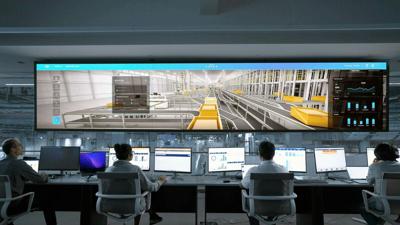Data centers are facing significant energy challenges that can't be solved by green energy alone, as Matthias Rebellius, chief of Siemens Smart Infrastructure, told The Wall Street Journal. While these facilities provide essential computing power for AI models, they consume massive amounts of energy and water for cooling. In a detailed analysis shared with The WSJ, the data center market shows remarkable growth, Siemens' data center business experienced a 60% jump in orders, reaching €3.6 billion, and a 50% increase in revenue, exceeding €2 billion, over the past year.
Rebellius noted that some operators are exploring alternative power sources, such as nuclear power, small modular reactors, and hydrogen, as long-term solutions. Despite this rapid growth phase driven by AI, the market is expected to stabilize while maintaining mid-double-digit growth, outpacing normal infrastructure market rates and quadrupling GDP growth.
In a related development, Reuters reported a major milestone in AI infrastructure spearheaded by Microsoft. The tech giant is set to invest approximately $80 billion in fiscal 2025 to develop specialized data centers for AI model training and cloud-based applications.
As detailed in Reuters' story, the investment decision comes amid surging demand for facilities capable of linking thousands of chips in clusters to support AI computing needs. Microsoft’s capital expenditure in the first quarter of fiscal 2025 has already risen by 5.3% to $20 billion, with analysts expecting the total fiscal year spending, including capital leases, to reach $84.24 billion. As OpenAI's primary backer, Microsoft is positioning itself as a leading contender in the AI technology race, with more than half of this massive investment targeted for projects in the United States.
The rapid expansion of data centers is also creating significant challenges at the state level. A story reported by the Cleveland highlights the situation in Ohio. The scale of power demand is unprecedented: While Central Ohio's current peak power demand is around 4,000 megawatts, American Electric Power has already committed to adding 5,000 megawatts for new data centers. The story reveals a complex regulatory battle over who should bear the infrastructure costs.
The Cleveland reports that the debate centers on whether data centers should be required to purchase at least 85% of their projected power demand, regardless of actual usage, as proposed by AEP, or if they should follow a more flexible range of 75% to 85%, as suggested by data center operators. This decision could have significant implications for residential customers, who the Ohio Consumers' Counsel argues that residential customers should not have to subsidize investments primarily benefiting large corporations, a decision that could have significant implications for all stakeholders.







(0) comments
Welcome to the discussion.
Log In
Keep it Clean. Please avoid obscene, vulgar, lewd, racist or sexually-oriented language.
PLEASE TURN OFF YOUR CAPS LOCK.
Don't Threaten. Threats of harming another person will not be tolerated.
Be Truthful. Don't knowingly lie about anyone or anything.
Be Nice. No racism, sexism or any sort of -ism that is degrading to another person.
Be Proactive. Use the 'Report' link on each comment to let us know of abusive posts.
Share with Us. We'd love to hear eyewitness accounts, the history behind an article.